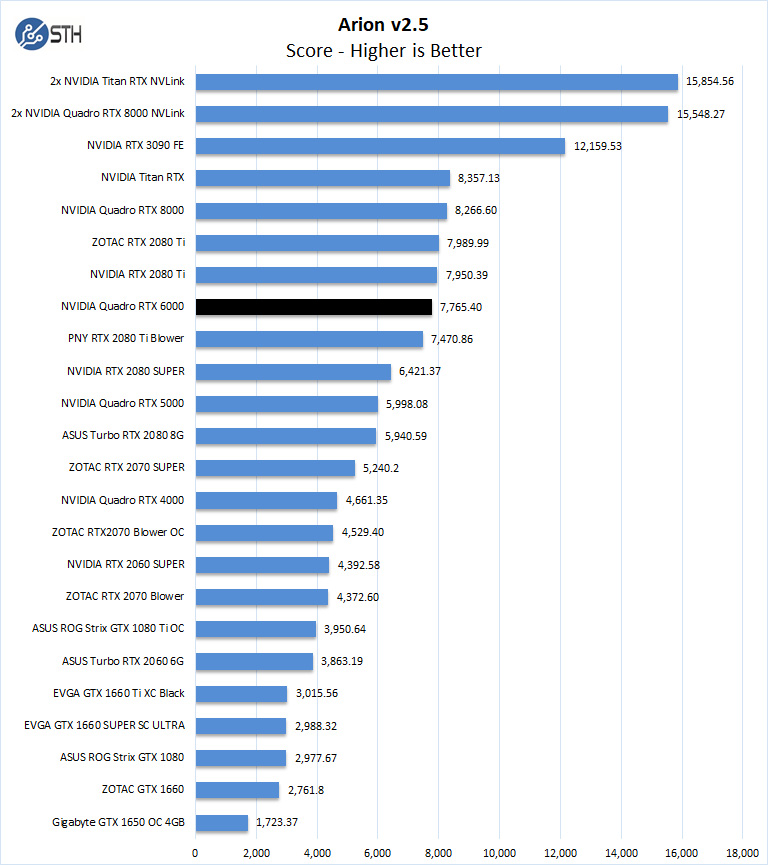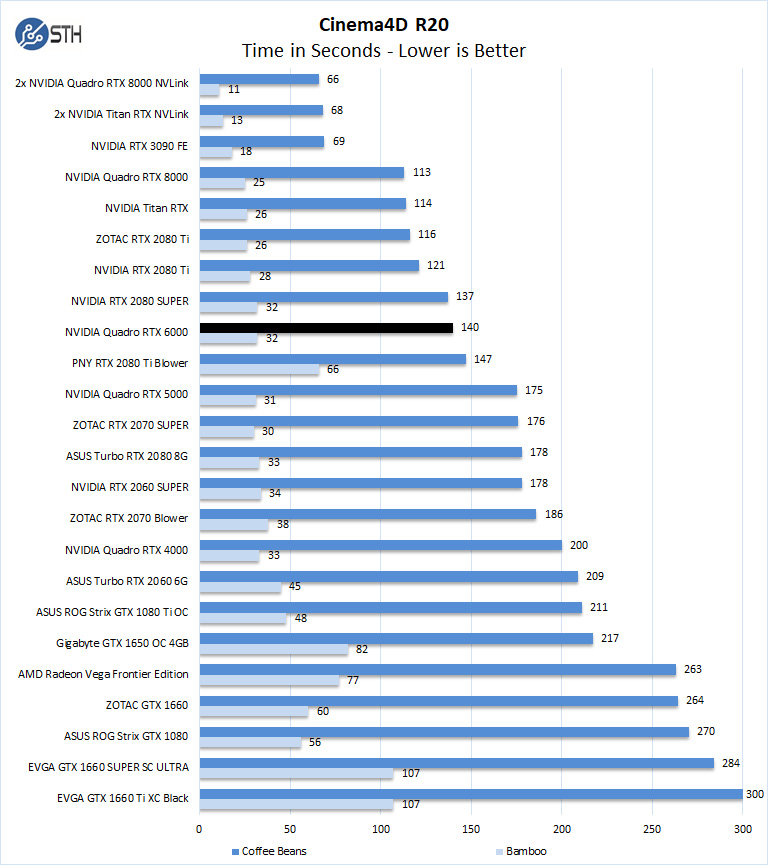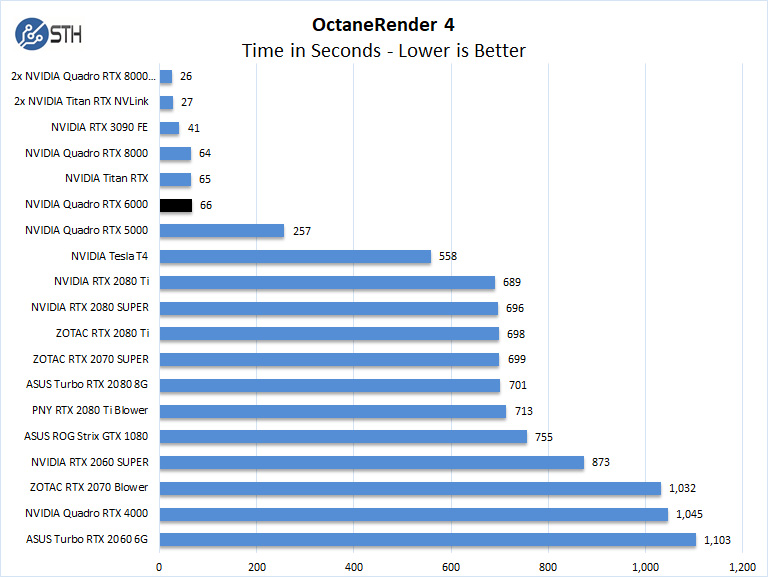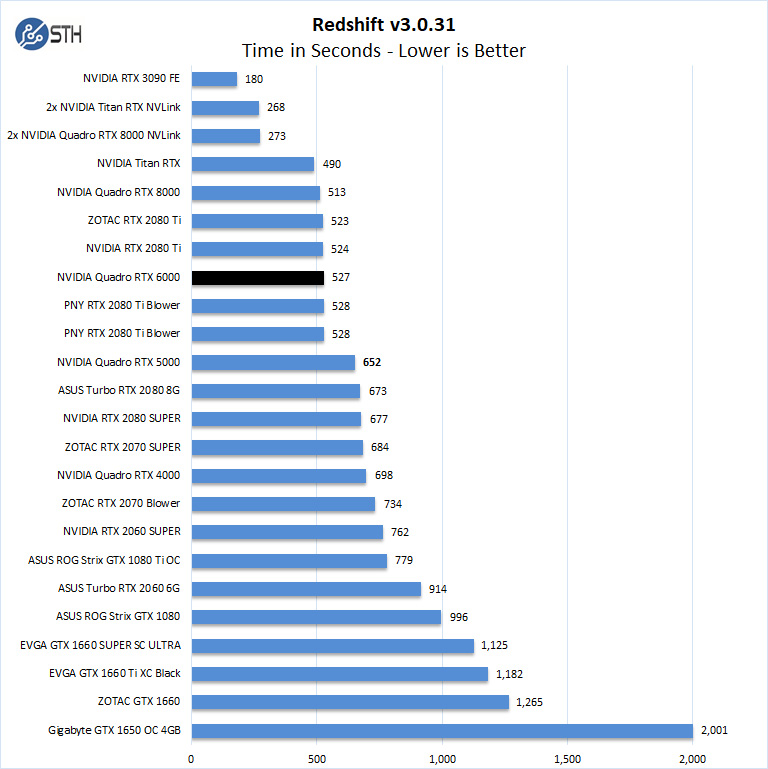NVIDIA Quadro RTX 6000 Rendering Related Benchmarks
Next, we wanted to get a sense of the rendering performance of the NVIDIA Quadro RTX 6000.
Arion v2.5
Arion Benchmark is a standalone render benchmark based on the commercially available Arion render software from RandomControl. The benchmark is GPU-accelerated using NVIDIA CUDA. However, it is unique in that it can run on both NVIDIA GPUs and CPUs.
Download the Arion Benchmark from here. First-time users will have to register to download the benchmark.

Like our first set of benchmarks, the Quadro RTX 6000 shows impressive single GPU results and again, falls into the RTX 2080 Ti cluster of scores.
MAXON Cinema4D 3D
ProRender is an OpenCL based GPU renderer that is available in MAXON’s Cinema4D 3D animation software. A fully functional 42-day trial version is available for downloaded from the MAXON website here. Note: Even after expiration, the trial can still be used to measure render times.

With a one-second difference, the NVIDIA Quadro RTX 6000 shows respectable scores. Here faster clocks will help.
OctaneRender 4
OctaneRender from Otoy is an unbiased GPU renderer using the CUDA API. The latest release, OctaneRender 4, introduces support for out of core geometry. Octane is available as a standalone rendering application, and a demo version is available for downloaded from the OTOY website here.

OctaneRender generates a hefty load on GPU’s. Here the Quadro RTX 6000 performed how we would have expected.
Redshift
Redshift is a GPU-accelerated renderer with production-quality. A Demo version of this benchmark can be found here.

With Redshift, the Quadro RTX 6000 again falls into the RTX 2080 Ti cluster of scores.
Next, we will have 3DMark results before moving onto power consumption, thermals, and our final thoughts.




One of the big differences between the RTX Titan and the RTX 6000 is the ability to RDMA, aka, GPU-Direct DMA between machines.
I’d love to see that tested using Mellanox RDMA ConnextX 5 or higher cards on a 25, 40 or 100gb VPI or ethernet connection.
@Larry Barras
I’ve a dual 2080ti machine in a network that runs gig-E and QDR Infiniband. I have to explicitly tell NCCL to not look on the IB network for peers. So, I think you may be able to do RDMA with the gamer cards too.
No, none of the “consumer” range cards can do GPU-direct DMA, not even the Titan RTX. I’ve tried directly in the API and no dice, period. The RTX2080ti definitely will not, the API always returns an error code of “no permission/feature unsupported”.
@Larry
Ah, OK then. Good to know.
Hey guys!
Not sure what is up with that Octane benchmark guys but I think you should recheck the data you’ve gathered so far.
Given all the other reviewers and the official benchmark results page on Otoy’s page an RTX 2080ti performs about the same as the Titan RTX. The 3090 is typically about 2x as fast as the 2080ti in that benchmark – not quite the difference you’ve benchmarked.
Seems like something is super off there as the benchmark isn’t VRAM limited and so even a 2080 should be positioned a lot differently.
Are you sure you are running the latest benchmark? I can’t seem to reproduce these results on my end at al..